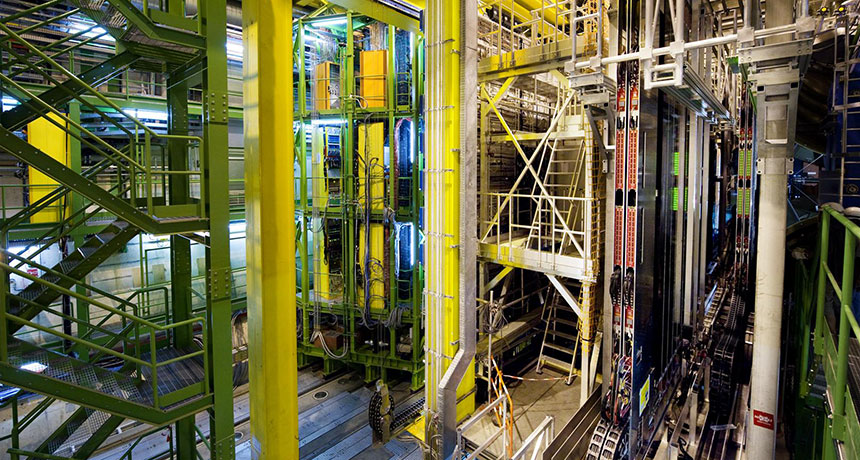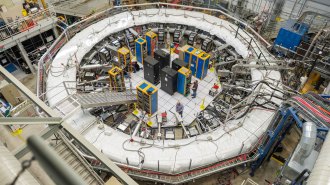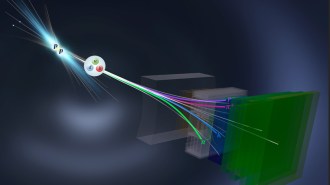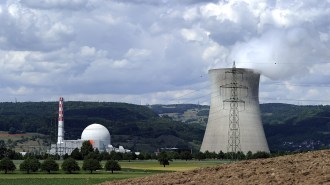Evidence for new form of matter-antimatter asymmetry observed
Lambda-b particle is first baryon to show signs of CP violation

NOT SYMMETRIC The LHCb experiment, shown above, has detected hints of an asymmetry between matter and antimatter in decays of particles known as lambda-b baryons.
CERN
- More than 2 years ago
Like two siblings with divergent personalities, a type of particle has shown signs of behaving differently than its antimatter partner. It’s the first time evidence of matter-antimatter differences have been detected in decays of a baryon — a category of particle that includes protons and neutrons. Such matter-antimatter discrepancies are key to explaining how the universe came to be made mostly of matter, scientists believe.
The result is “the first measurement of its kind,” says theoretical physicist Yuval Grossman of Cornell University. “Wow, we can actually see something that we’ve never seen before.”
Evidence of matter-antimatter differences in decays of baryons — particles which are composed of three smaller particles known as quarks — has eluded scientists until now. Previous experiments have found differences between matter and antimatter varieties of mesons, which are made up of one quark and one antiquark, but never in baryons.
For most processes, the laws of physics would be the same if matter were swapped with antimatter and the universe’s directions were flipped, as if reflected in a mirror. But when this principle, known as CP symmetry (for “charge parity”), is violated, matter and antimatter act differently. Now, scientists have found hints of CP violation in the decays of a particle known as a lambda-b baryon.
Scientists with the LHCb experiment, located at the Large Hadron Collider near Geneva, reported the result online September 16 at arXiv.org. They found that when the lambda-b baryon decays, the particles produced by the decay speed away at different angles and momenta for matter and antimatter versions of the baryon. (LHCb scientists declined to comment for this article, citing the embargo policy of Nature Physics, the journal to which the paper was submitted.)
After the Big Bang, the universe initially held equal parts antimatter and matter. But as the universe evolved, the laws of physics favored matter through CP violation, and antimatter became a rarity. Scientists’ well-tested theory of particle physics, the standard model, includes some CP violation, but not enough to explain the current imbalance. So physicists are searching for additional sources of the discrepancy.
It’s not surprising that differences in matter and antimatter appeared in baryons as well as mesons, says theoretical physicist David London of the University of Montreal. But precise measurements of baryons might eventually reveal deviations from the predictions of the standard model. Such a result could point the way to additional asymmetry that allowed the universe as we know it to form. “It’s just the first step, and hopefully there will be more such measurements,” says London.







